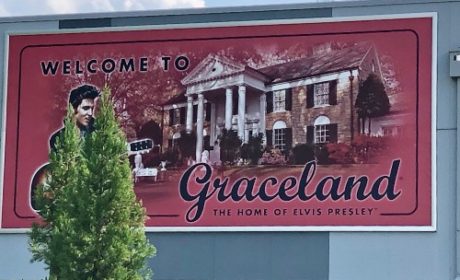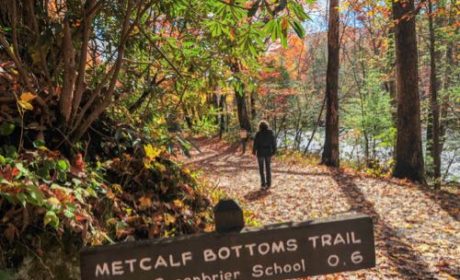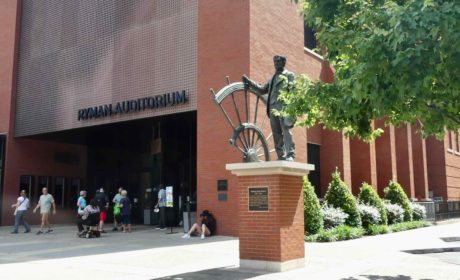On a visit to Tennessee, after hiking the Great Smoky Mountains, what’s next on your list? How about exploring a destination that combines history, historic homes and small town charm like Franklin, TN?
If you’re looking for things to do in Franklin, Tennessee, Kathleen Walls (American Roads and Global Highways) offers her tips for making the most of your trip. Read about Franklin’s Civil War history, the historic downtown, a fun day trip to Leiper’s Fork and some mighty fine dining.
Most visitors go to Franklin, Tennessee for its Civil War history. Franklin is the site of one of the bloodiest battles in the war that tore our nation apart.
Confederate General John Bell Hood with over 20,000 men wanted to retake Nashville. On the Union side, General John Schofield had about an equal number of men to ensure that Nashville remain under Union control. The two armies clashed at a plantation in Franklin.
Although the war history is important, there is much more to Franklin. It has a vibrant downtown with unique shops and fantastic dining. I loved touring both sides of Franklin, TN.
Table of Contents
Carter House
Carter House, built in 1830, was home to Fountain Branch Carter and his family. This is the site of the battle that began about 4PM on November 30, 1864.
The Carters and neighbors, the Lotzs, took refuge in the Carter House basement. The frightened residents emerged from the basement to find the home and all its outbuildings torn apart from bullet holes. Thousands lay dead and dying nearby, included one of the Carter sons, 24-year-old Tod.
When I toured the Federal-Style home, one room especially caught my interest. It’s called the “Sick Room,” and is the room where Tod died.
The outbuildings; a separate kitchen, slave cabin, smokehouse, and a farm office remain much as they were in 1864. The farm office’s wood walls appear like an almost lacey pattern from all the bullets. There are over a thousand bullet holes in the buildings.


Carnton House Tour
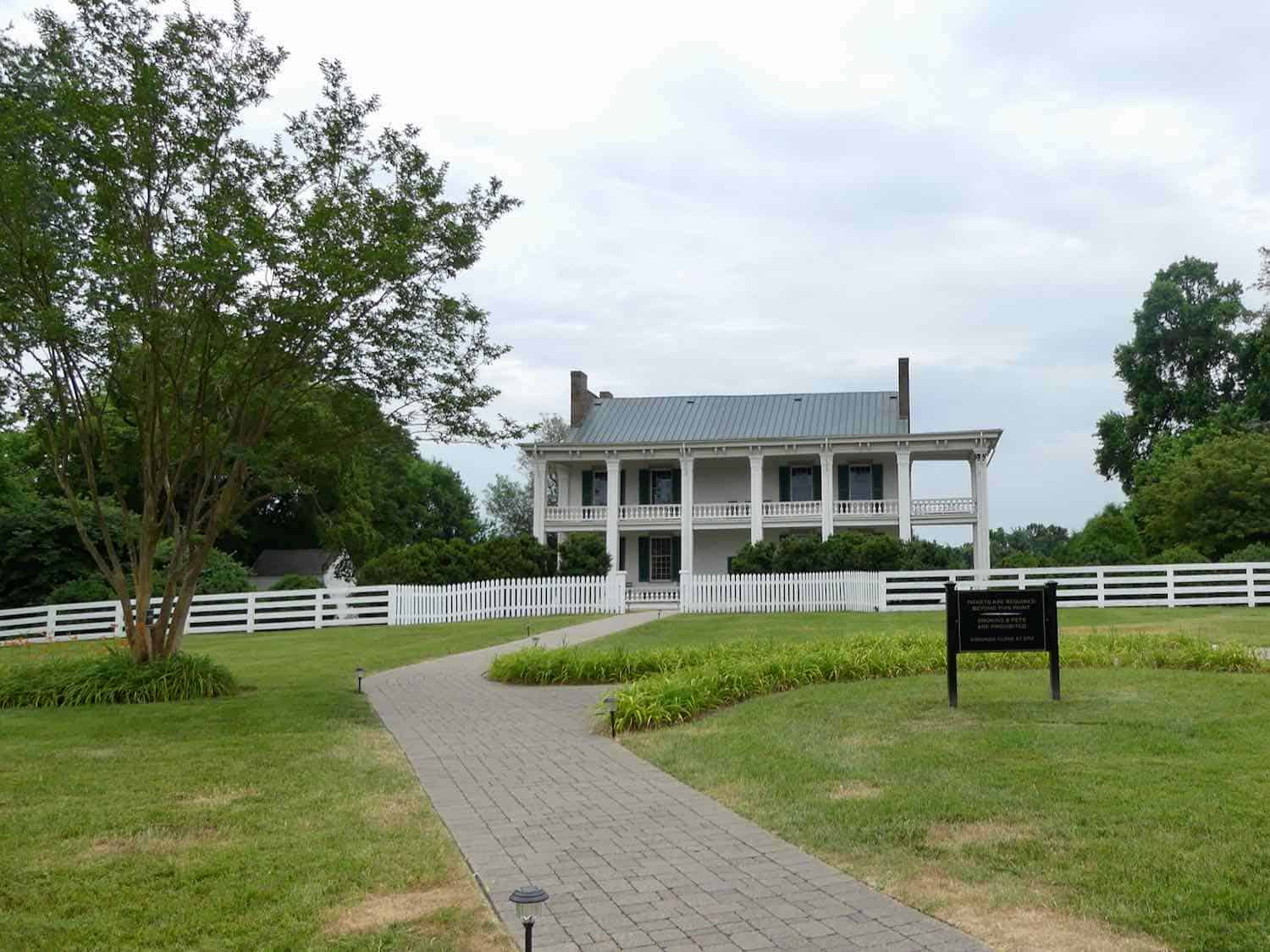
With so many wounded soldiers, multiple hospital sites sprang up nearby. Carnton, the beautiful Greek revival home of John McGavock, his wife, Carrie Winder McGavock, and their two children, Hattie and Winder, functioned as a temporary hospital. The home, and Carrie, were immortalized when Widow of the South became an award-winning book.
The downstairs has period furniture and family memorabilia. It’s when I walked upstairs that the horror hit.
In one upstairs room, believed to be Winder’s bedroom, there’s a temporary operating table; six planks placed across two sawhorses. A saw, much like a carpenter’s hacksaw, sits on it.
On another table, there are the other tools surgeons of that era used, file, probes, picks, pliers, hammers. By the operating table, the floor is stained dark with blood forming a circular stain where the surgeon would have stood.
In a corner of the room, there’s an area still stained with blood. Carnton’s Historical Interpreter, Brad Kinnison, believes this is where the nurses stacked the amputated limbs.
In real life, it was not only Carrie, but John and the children, who nursed hundreds of injured soldiers. For the ones who died, Carrie recorded their burial places so loved ones might find closure.
McGavock Confederate Cemetery
McGavock Confederate Cemetery houses the remains of around 1,500 Confederate soldiers. In 1866, John McGavock donated two-acres to bury the men who died in the Battle of Franklin. At the time, they buried the soldiers on the plantation grounds.
When the new cemetery opened in 1866, they re-interred them here. It is part of the tour.
My tour group walked behind the main house to see a cemetery divided into sections for each state with the men from that state who fought there. Some headstones only contain initials; many just say “Unknown.” Only about 780 of the dead could be identified.
John and some other Franklin citizens hired George Cuppett to move the dead, record the known names in a record book, and put a wooden marker on each grave. They paid Culppett $5 for each body.
Lotz House Museum
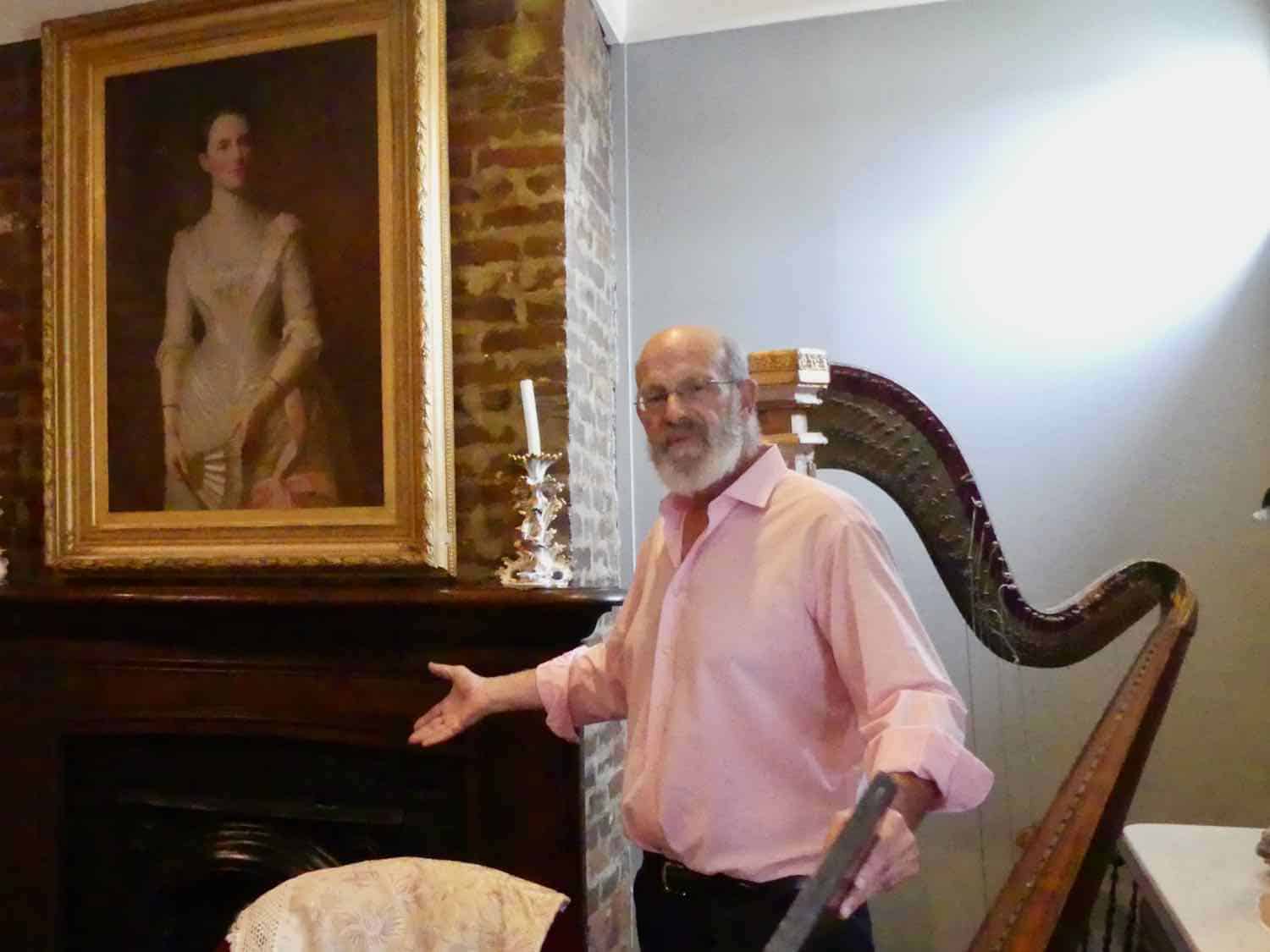
Lotz House is another place I enjoyed visiting. Johann Albert Lotz was a master woodworker and piano maker from Saxony.
Johann and his wife, Margaretha, built the house on land purchased from Fountain Branch Carter in 1858. Johann used the house as a showcase of his work, so you will see many interesting pieces of furniture, as well as the fireplaces’ woodwork.
During the battle, the Lotzs took refuge in Mr. Carter’s cellar. The Lotz’s home sustained serious damage and, although Mr. Lotz repaired it, there are still remnants of the battle scars.
Many of the rooms still have bloodstains on the floor. On the first floor, there is a burned trail where a fiery cannon ball landed and rolled.
The house is furnished as it was when the Lotzs lived there. There are many interesting artifacts, including pictures of the Lotzs.
Thomas Cartwright, Executive Director, gives an informative tour of the home. There are also ghost tours.
McLemore House African American Museum
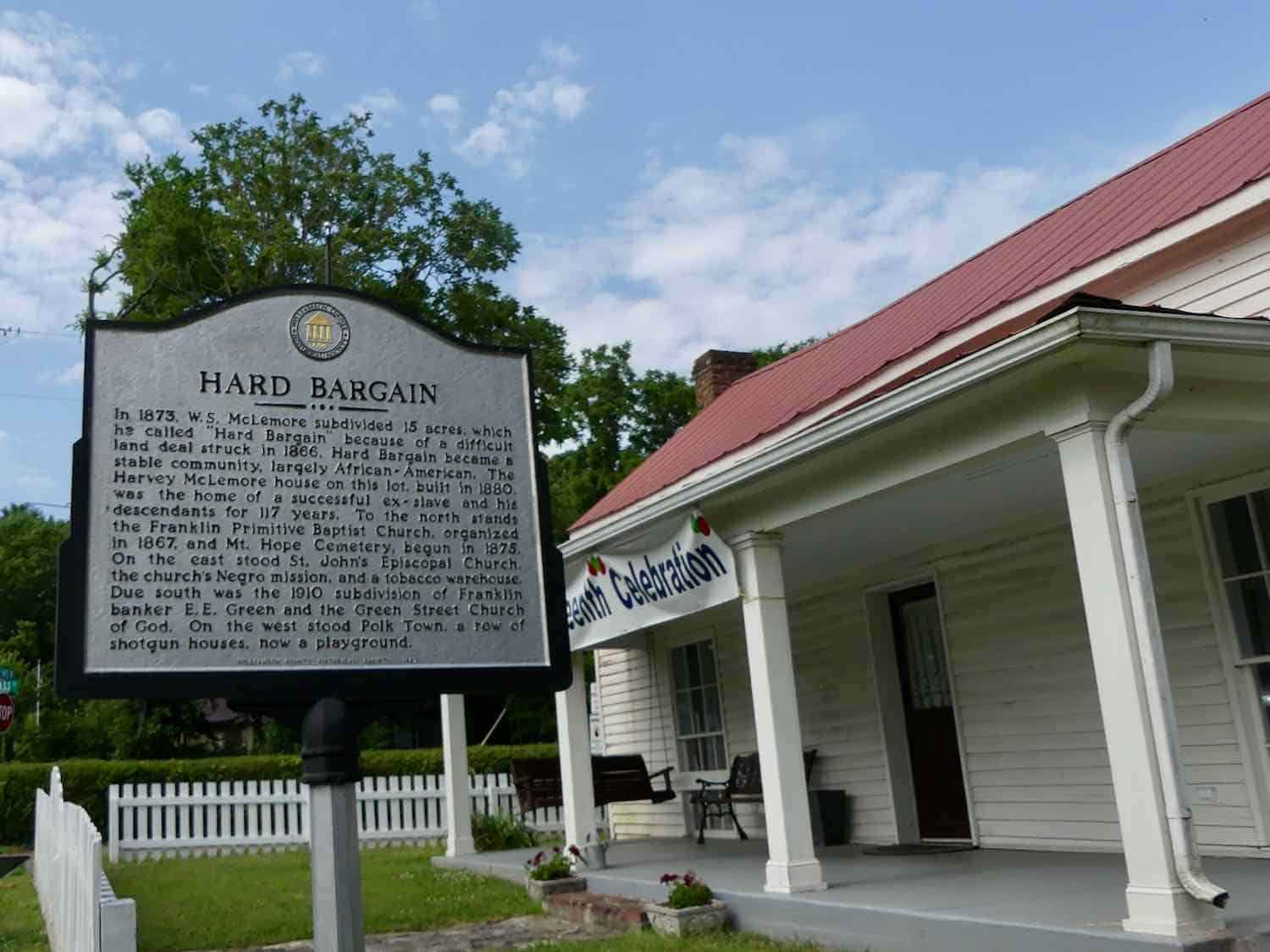
After the war, life was different for both Black former enslaved people and their former owners. One former-slave, Harvey McLemore,realized the value of ownership of land. He bought four lots from his onetime owner, W. S. McLemore. McLemore was a former Confederate officer.
McLemore divided 15 acres to sell to former enslaved people. The area became known as “Hard Bargain” and created a middle-class African American community.
President of the African-American Heritage Society in Franklin, Alma McLemore, told me, that despite W. S. being Harvey’s former owner, the two men were friends. Harvey built a small white clapboard home on those lots in 1880. His family owned the property until 1997.
Today, McLemore House is the oldest remaining home in Franklin owned by an African American. It’s preserved as a museum (official website here).
The museum tells about Harvey’s family, like his granddaughter, Maggie Mathews, a cosmetologist who operated her beauty parlor in it and remained in the house until she died in 1989.
There is so much more there than family items. One room displays those who fought for our country, from Buffalo Soldiers to the more modern day wars.
Williamson County Museum
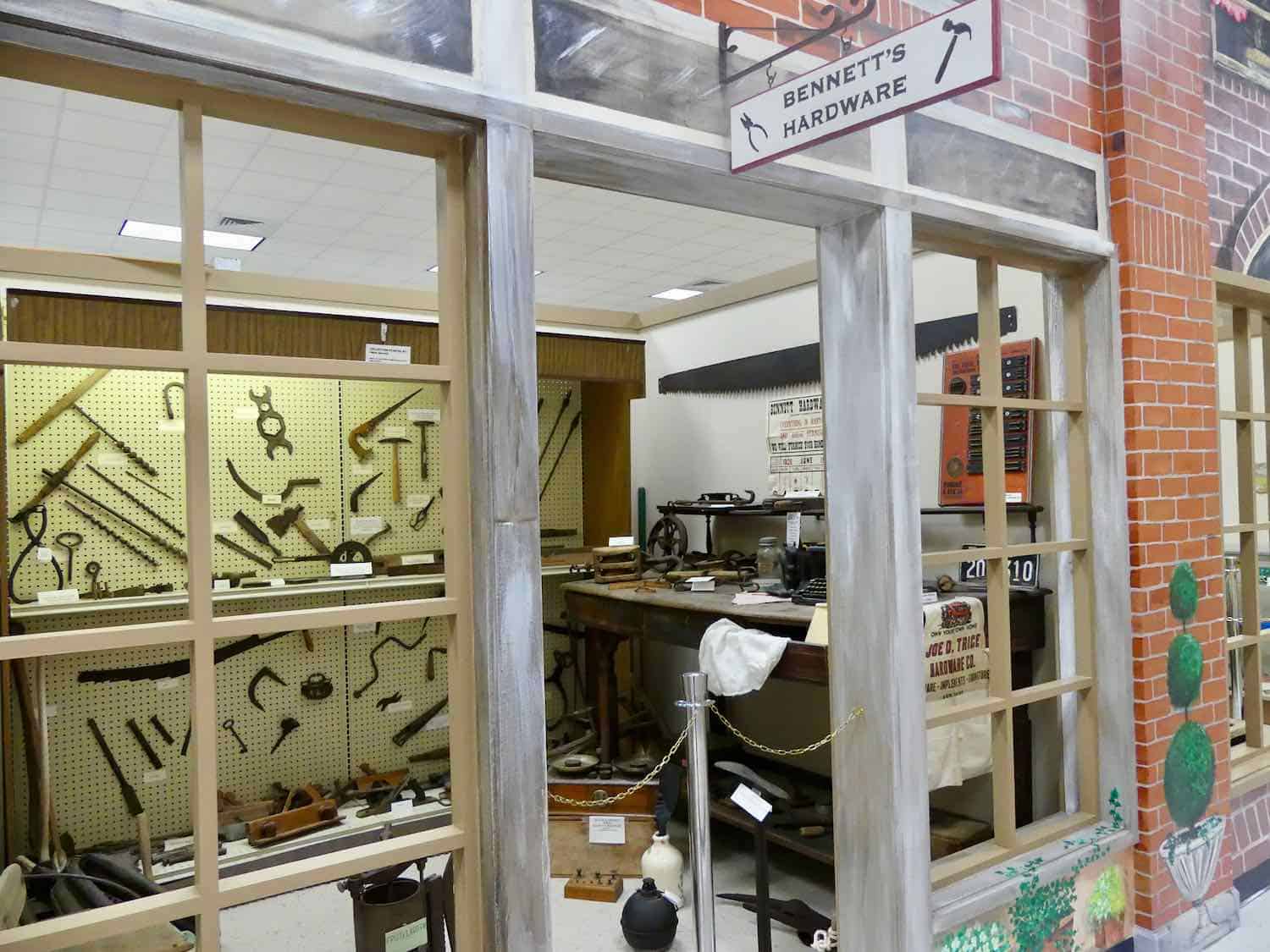
Williamson County Museum takes you on a journey from past to present. The Tennessee General Assembly created the town of Franklin and Williamson County on October 26, 1799.
The museum shows an even earlier time going back to prehistory. There are exhibits of ancient fossils found in the area.
Emancipation and Reconstruction exhibits and on into the age of the automobile are all shown. Franklin’s first taxi is on display here, as well.
Dr. Get Well’s office shows how much medicine has changed. An old wooden wheelchair looks as if it could still be used.
The black bag reminds me doctors once made house calls. The wall-mounted wooden telephone is a long way from our present cell phones.
A section re-creates downtown Franklin of the 1800s and early 1900s. Bennett’s Hardware Store offered assorted hand tools. The hardware store was located at the corner of 4th and Main and remained in business into the 20th century.
Lou’s Dress Shop catered to the ladies with fashions of the 19th century. The general store sold everything from live chickens to kids’ toys.
Historic downtown Franklin
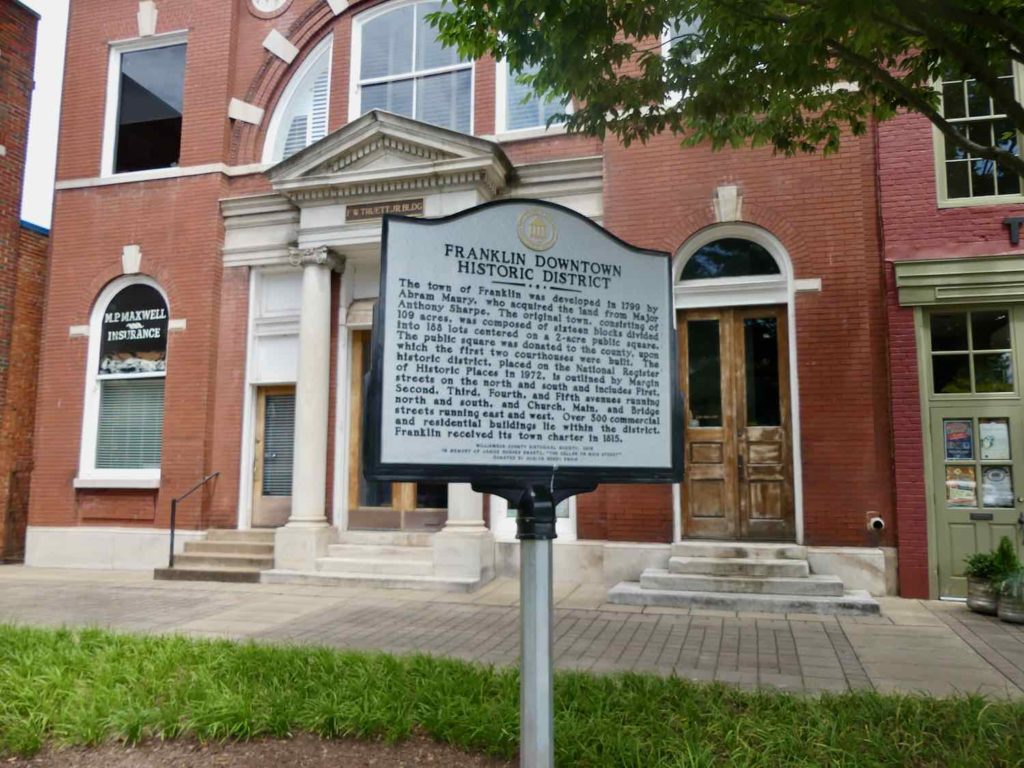
Franklin’s historic downtown is on the National Register of Historic Places. I began at the square where a monument to an unknown Confederate Infantryman surrounded by four original Federal field guns stands.
The soldier atop the column is nicknamed “Chip” because when he was being placed on the pedestal, the workers dropped him and his hat got chipped.
Franklin honors their African-American troops that served in the U.S. Army from Reconstruction to modern days in the same square. There are plaques telling that story and about a slave market that once operated nearby.
Shopping in the historic downtown today offers lots more choices than the little general store portrayed in the museum.
As I window-shopped the antique and herb stores, I spied the spires of two historic churches. St. Paul’s Episcopal Church, completed in 1834, is Tennessee’s oldest Episcopal Church. After the battle of Franklin, St Paul’s served as a hospital.
They historic Franklin Presbyterian Church was built in 1888 to replace an earlier one from 1842.
Franklin Theater began life in 1937. It closed in 2007. Today, it is back and shows movies, concerts, and live events.
The Factory at Franklin
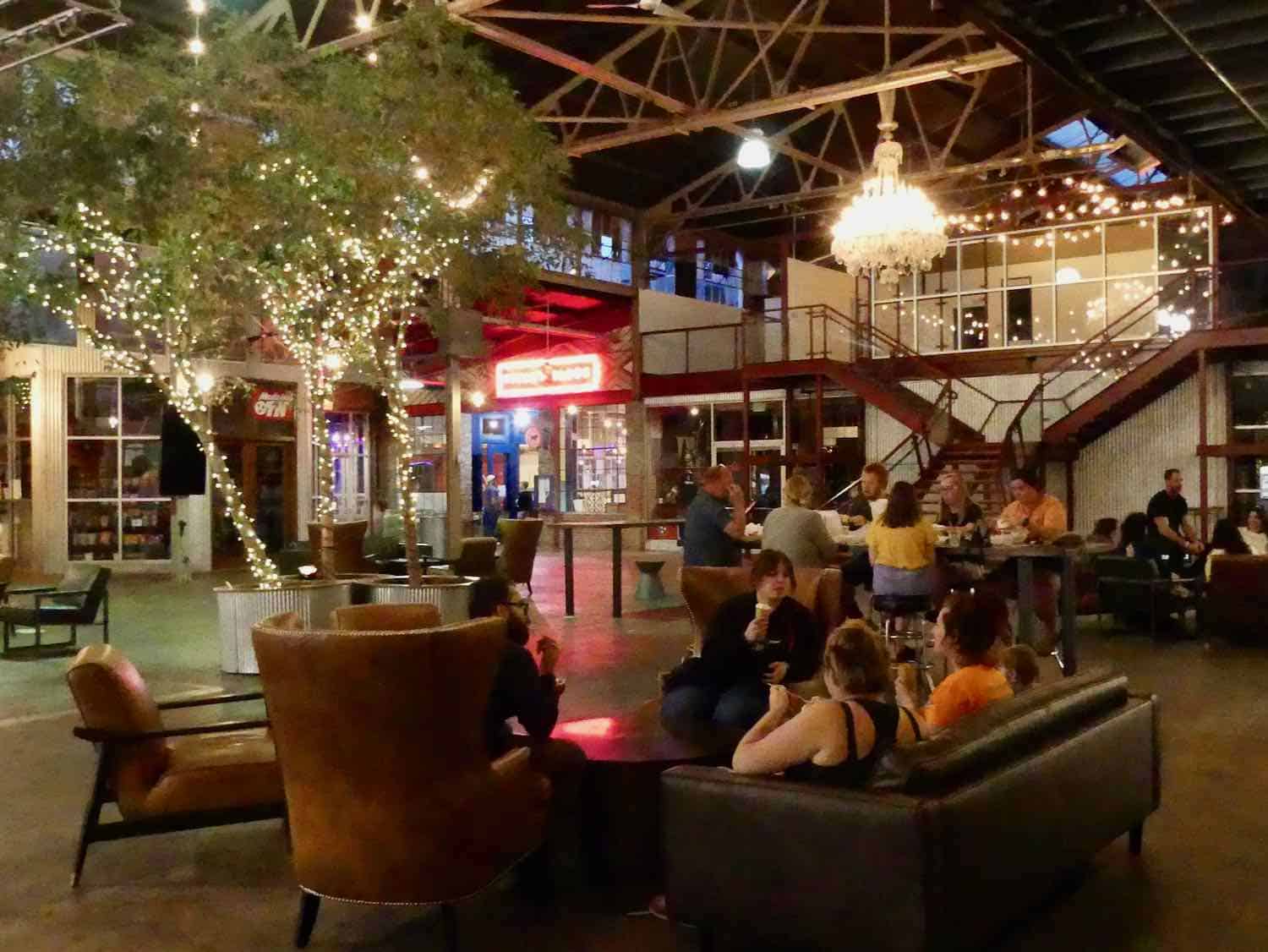
Driving up in front of The Factory at Franklin (official website), I would never guess it was once a stove factory. The renovated space now houses many interesting shops, dining, Bluebird Theater, and, on Saturdays there is a farmer’s market.
Fort Granger
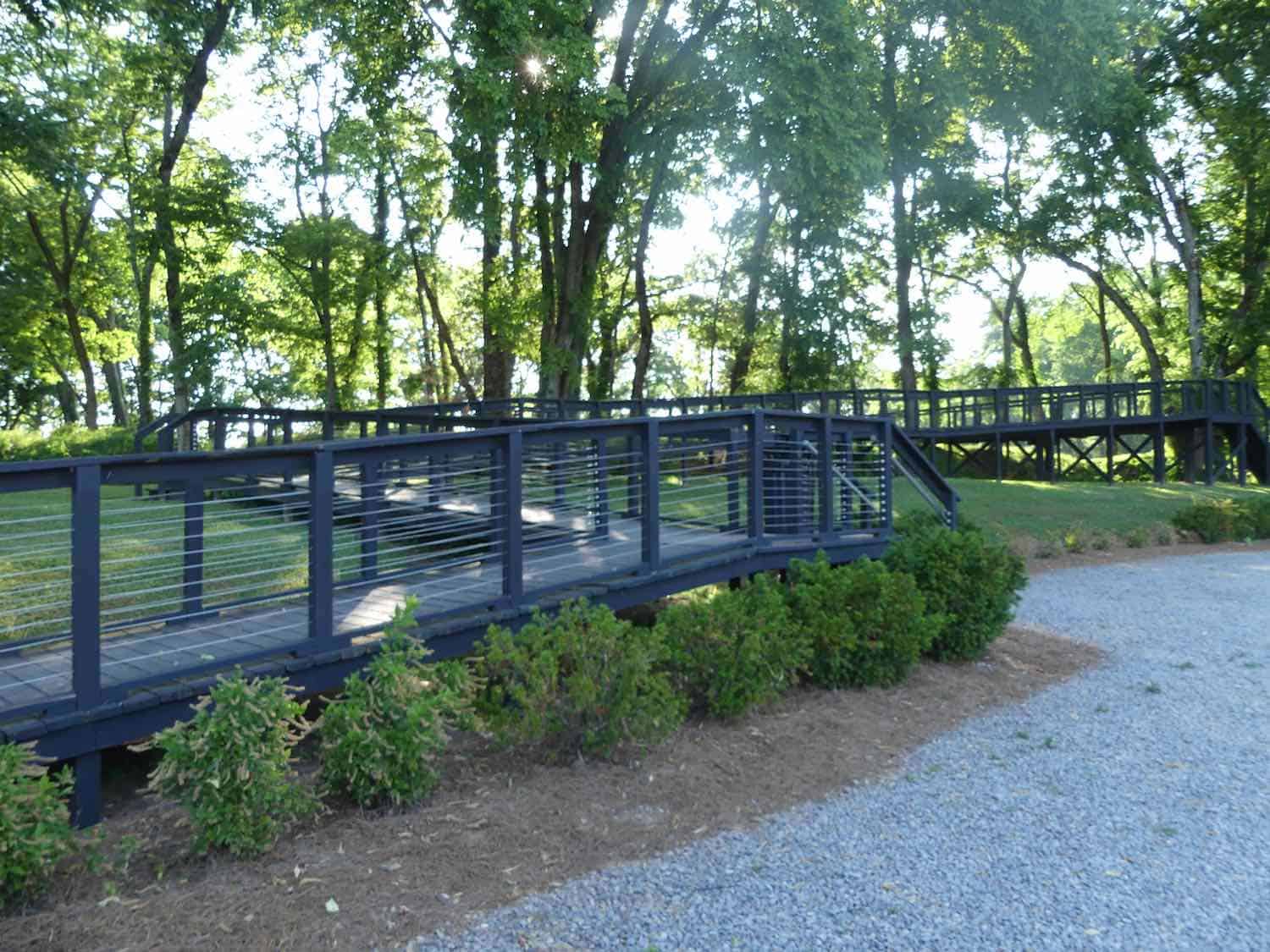
Fort Granger is the Union fort that was the Union’s defense for the Second Battle of Franklin. I took the trail from Pinkerton Park along a boardwalk that offers a good view of the Harpeth River.
From the observation deck, I could see the earthworks dug by the Union soldiers. There are historical panels placed along the trail that tell the fort’s history.
Pinkerton Park, just to the South of Fort Granger, offers a playground, picnic pavilions, picnic tables, and grills.
Franklin Masonic Hall
Franklin Masonic hall is one of Franklin’s most historic buildings. At present, you can only do a drive by. The city plans to open it to the public for the building’s 200th birthday in 2023.
It is one of just two Masonic buildings in the country designated National Historic Landmarks. Early area Masons met here.
In 1830, it was the site of treaty negotiations between President Andrew Jackson and the Chickasaw Nations. That treaty was never signed. During the Civil war, soldiers on both sides left inscription on the walls.
Winstead Hill Park
Winstead Hill Park, just south of Franklin, is a 61-acre historic battle site. This is the place where Gen. John Bell Hood looked down on Franklin and decided to engage the Union forces in the Battle of Franklin. There are interpretive signs, a walking trail, picnic tables, and restrooms.
The Park at Harlinsdale Farm
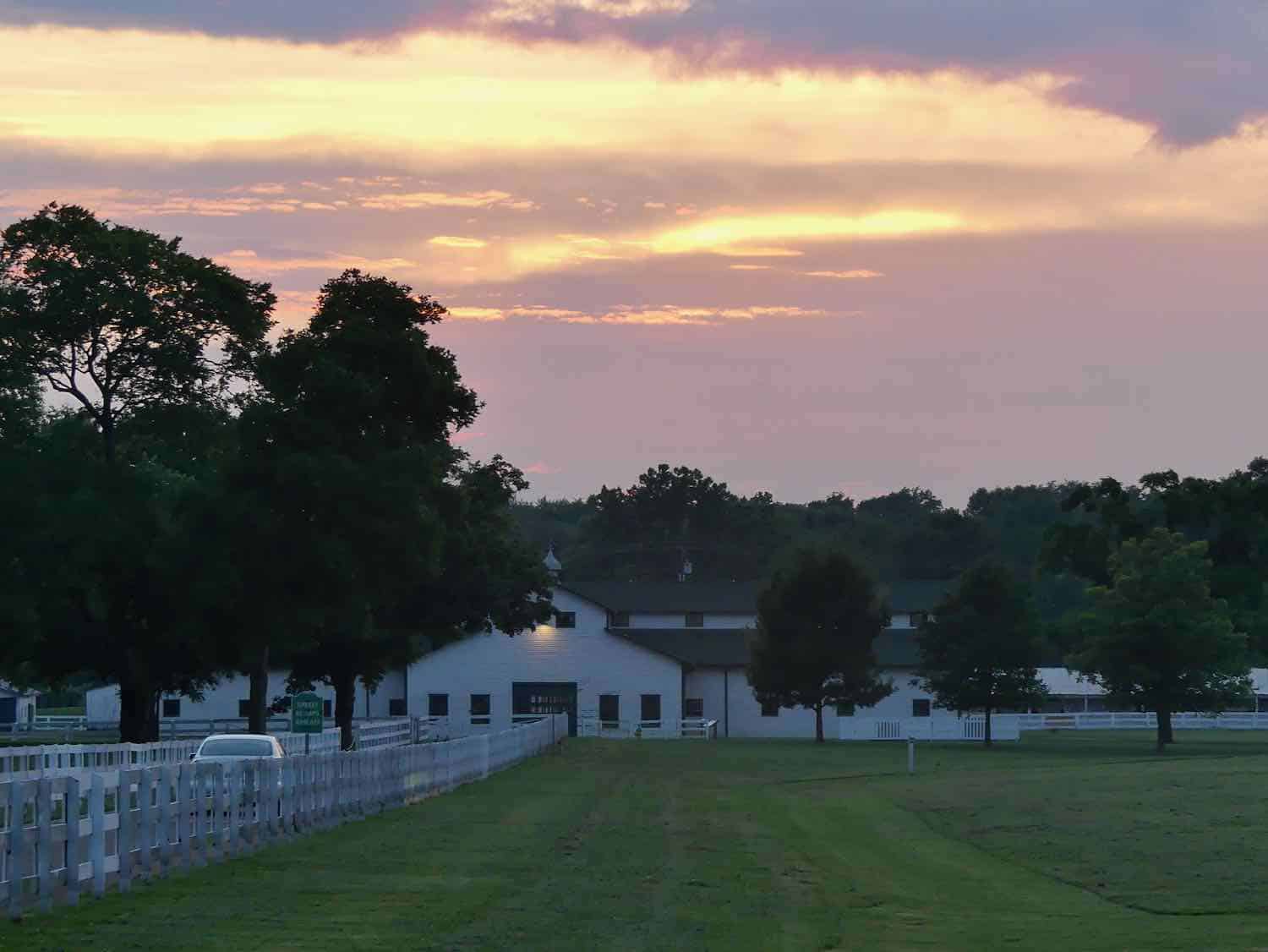
Tennessee is known for the Tennessee Walking Horse. In 1933, W.W. Harlin opened Harlinsdale Farm as a breeding farm for walking horses. Most walking horses today trace their linage to Midnight Sun, his most famous stallion.
In 2007, the state purchased the property and created The Park at Harlinsdale Farm. You’ll find trails, a large dog park, an equestrian trail, and a pond for catch-and-release fishing. The stable is now the visitors’ center.
Throughout the year, the park offers concerts and events, like the Pilgrimage Music and Cultural Festival.
Dinner in historic Franklin
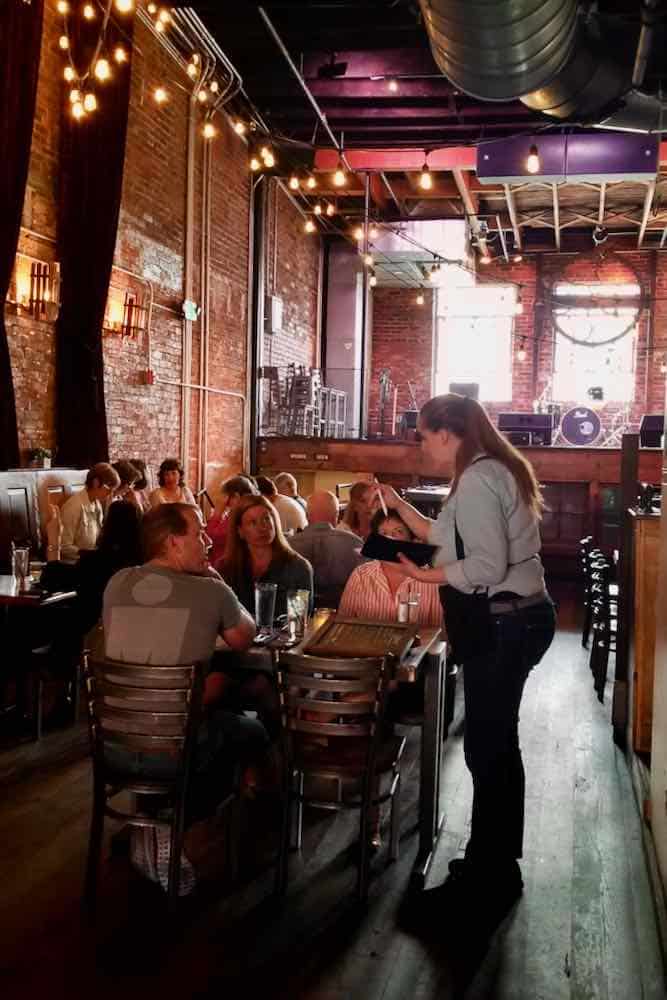
I love to dine in a place that has preserved an earlier history. Gray’s on Main has kept some of the history of the Gray Drug Co that served Franklin for almost a century. It’s located in a three-story Victorian building dating to 1876 that once was Franklin’s version of a Walgreens.
Present owners, Joni and Michael Cole, renovated the building in 2013. Michael told me of the work it was to keep the old flavor while meeting modern standards at Gray’s on Main.
I loved seeing a few drugstore mementos, including the sign in front with the pharmacy symbol. The restaurant is located on the ground floor. The second floor houses the music hall and bar. Food, wine, and cocktails are fantastic.
After dinner,I walked down the street to Kilwin’s Chocolate Kitchen. It’s a perfect dessert choice. I loved its Victorian era building.
Only problem was deciding which of their ice cream flavors to choose. I had to try some of their specialty, Mackinac Island Fudge, as well.
Leiper’s Fork
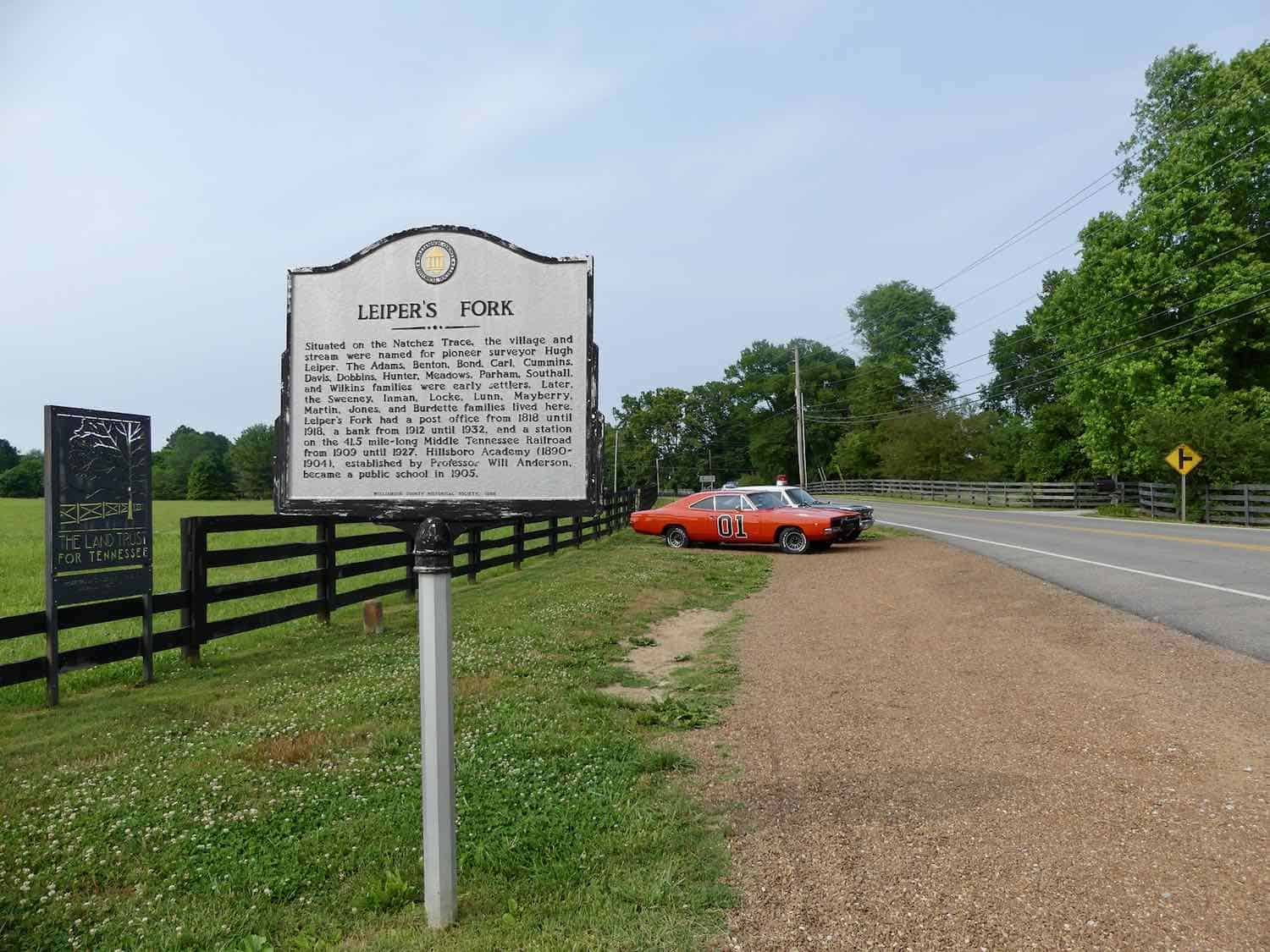
Driving into Leiper’s Fork, a rural suburb of Franklin, I saw the General Lee from Dukes of Hazzard and Barney Fife’s cruiser from the Andy Griffin Show parked on the side of the road. Leiper’s Fork, just off the Natchez Trace, will remind you of Mayberry or Hazzard County. The town is filled with art galleries, antique shops, and down-home restaurants.
The Shops at Leiper’s Corner offers unusual antiques. Another antique shop, Serenite Maison, is in a 1914 building. Creekside Trading Company mixes art with antiques.
Other art galleries I browsed are Leiper’s Creek Gallery and David Arms Gallery. I spoke to the artist at David Arms Gallery and he told me the old barn housing the gallery is reminiscent of those found on an antebellum tobacco plantation.
Pluckett’s old-fashioned country grocery store is also a restaurant. Country Boy’s Restaurant is another excellent choice.
Leipers Fork has its share of history. A slave cabin from 1801 that once stood on the plantation of Anne Gooch Benson, is a little off the road in a clump of trees, but is worth searching out.
Leiper’s Fork has no hotels. I stayed at one of Pot ‘n’ Kettle Cottages, Pickers Cottage. It was amazing and has a real local flavor. I felt as if I had moved to Leipers Fork.
Franklin makes a wonderful hub if you want to see Tennessee’s many sides; history, art, culture, and nature. It is close enough to Nashville to be a suburb, but still has its own unique personality. And there are enough things to do in Franklin to keep you busy for a couple of days.
The Natchez Trace Parkway is just 10 miles from downtown. You can take a canoe trip down the Harpeth River or do a walking or Segway tour of downtown Franklin. In my opinion, this historic town is one of Tennessee’s hidden treasures.

